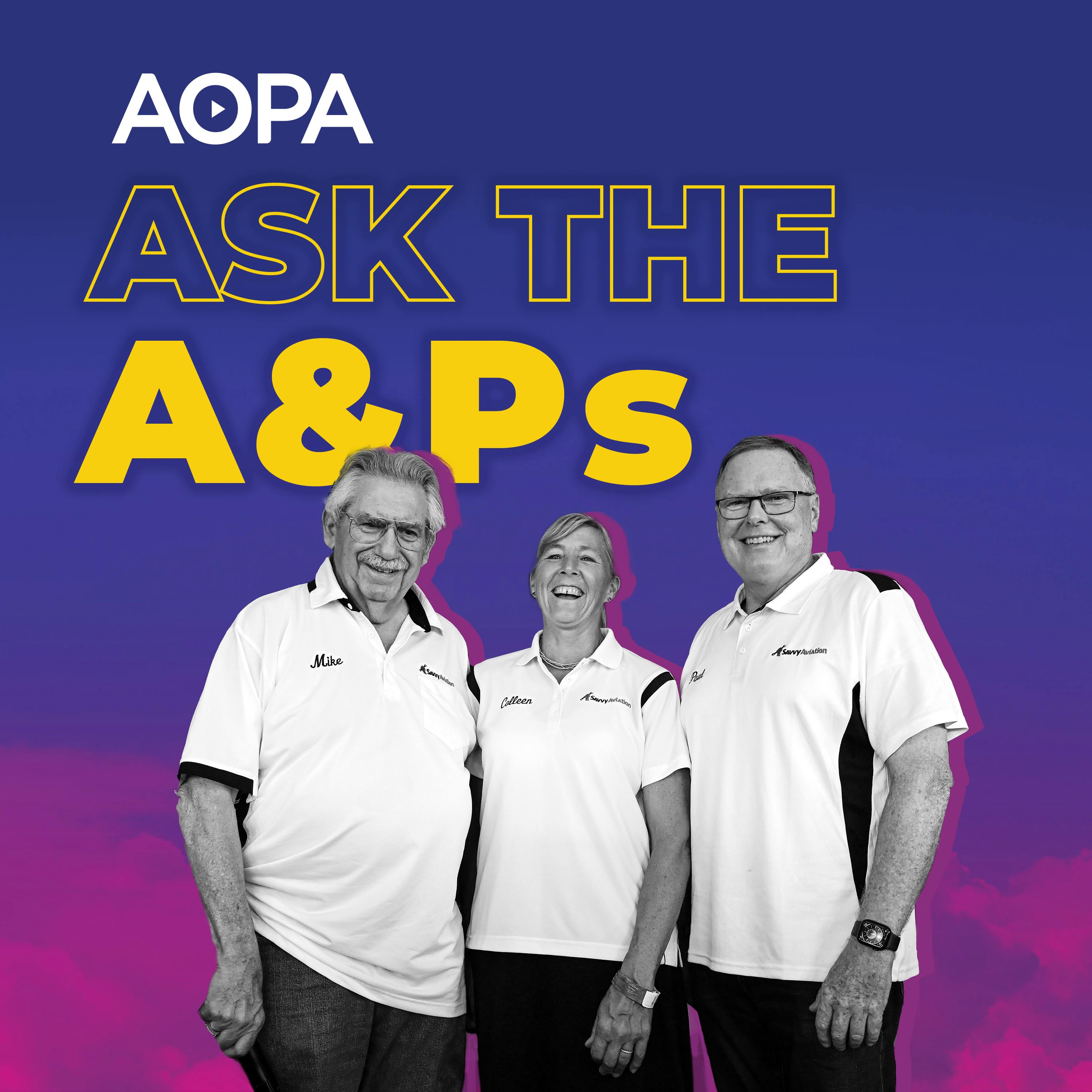EGTs are imaginary numbers
Description
Oil all over the nose, cylinders that are too clean, and bush propeller repairs. Mike, Paul, and Colleen handle it all this month. Submit your questions to [email protected] for a chance to be on the show.
Adam wonders what to do after a prop overhaul left him with a huge puddle of oil and some shaken nerves. His plan is to remove the newly overhauled prop and send it to the manufacturer. Paul questions whether it was an install error because a seal between the shaft and the prop seal can be broken during the install process. Mike agrees and thinks the manufacturer won’t find anything wrong.
Mike has a Cessna 150 with a 150 horsepower upgrade. He said the seller recommended not running it on Autogas because Lycoming never approved it. Mike says check Lycoming service bulletin 1070AB. It lists which fuels are approved for which engines. Paul correctly makes the point that the whole point of the STC is that it enables you to do things that the manufacturer wouldn’t necessarily have allowed. Mike said so long as there isn’t an operating limitation for specific fuels, you don’t even need the STC. Buying the STC gives you a flight manual supplement and placards.
Lyle has concerns about his oil analysis and how it relates to the way he operates his Cessna 182. After an engine reman his chrome levels were going up, but are now coming down. His mechanic was concerned he was flying too lean because everything on the borescope looked too good. The hosts describe the ideal leaning procedure as this: Don’t look at any gauges. Lean it until it starts running a little rough, and enrichen it only until it smooths out, and no more. He also has high silicon levels, which Mike attributes to a carb heat door that isn’t sealing fully. Lyle further wonders about his exhaust gas temperatures, which Paul and Colleen remind him are irrelevant. EGTs are only useful for looking at trends, according to Colleen. Mike said it’s not a measure of stress on the engine—only a measure of how much energy is being thrown out the exhaust.
Dewayne has an exhaust leak in his Tripacer. The two pieces of exhaust come together with a clamp, and a test shows it to be blowing more than bubbling. Paul said you can generally ignore leaks that only bubble, by blowing leaks need to be fixed. He recommends an expander and working very slowly to try and get the two pieces to better match. You can only push it about a thousandth of a inch, Paul said.
Rowan asks how to know when a knick or dent in a propeller becomes unsafe to fly. We all check our props before we depart, but few of us have a guide to know whether prop damage is normal or unsafe. Paul said a good rule of thumb is that if you run your fingernail along it and it catches you need to address it. But if it just runs along roughly, but doesn’t catch, it’s ok to continue. But, that’s not an owner-approved repair. Mike said the problem is that they create a stress point. A sharp point at its apex is more worrisome than a rounded dent. Advisory Circular 43-13 Chapter 8 Section 4 gives details for mechanics on how to deal with knicks, and it’s actually a pretty generous standard.
Chris can’t fly as much he’d like, and he wants to know if he should risk a ground run if the airplane has been sitting but he doesn’t have time to fly. Water being a byproduct of combustion, a short flight can be more detrimental to a flight than letting it sit. If the moisture doesn’t boil off it only adds more moisture to the engine. Mike said where Chris lives on the Gulf Coast, he would buy a dehydrator. There’s no hard and fast rule on how long is too long to go between flights, but the hosts say once every few weeks is fine, and try to keep it to less than a month.
More Episodes
Published 11/15/24
Lean of peak is causing odd vibrations in a Commander, and the hosts discuss proper troubleshooting. Plus carb heat on the ground, dehydrators, and parts no longer manufactured. Email [email protected] for a chance to get on the show.
Full notes below.
Chip said his mechanic is concerned about...
Published 11/01/24
Rough idle, electronic ignition basics, airplanes to avoid (or not), and the difference between detonation and pre-ignition are on tap for this episode. Email us at [email protected] for a chance to get on the show.
Join the world's largest aviation community at aopa.org/join
Full notes...
Published 10/15/24


